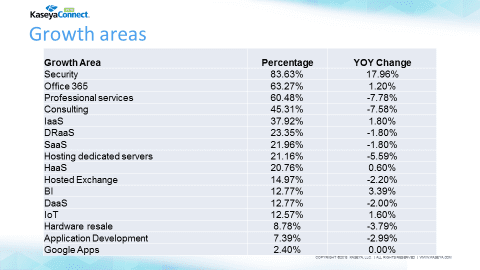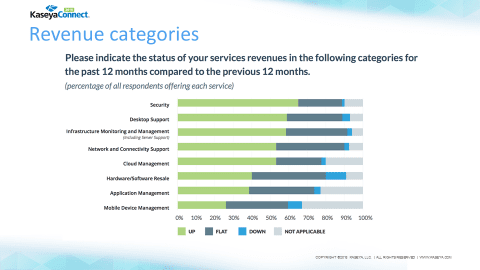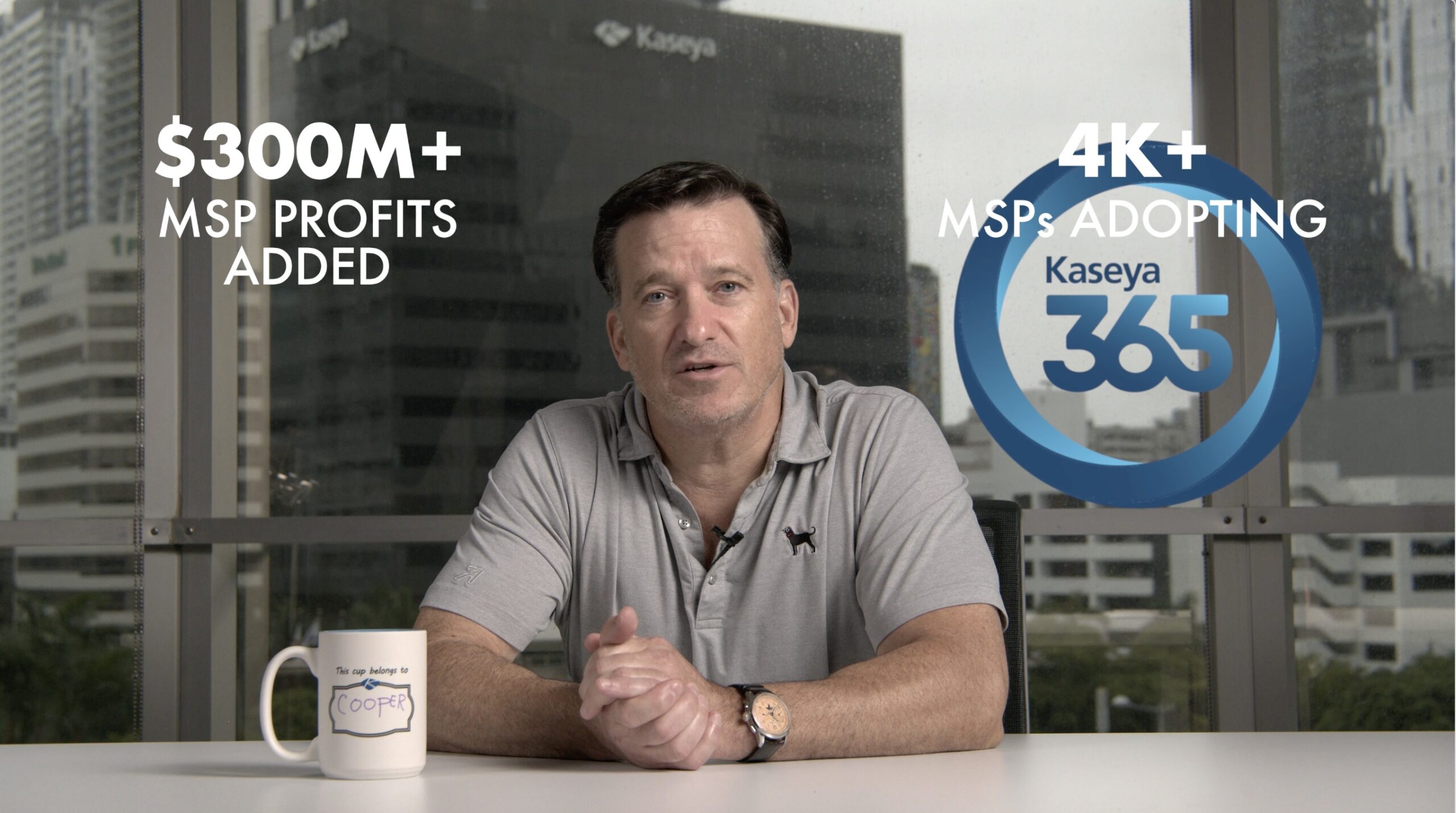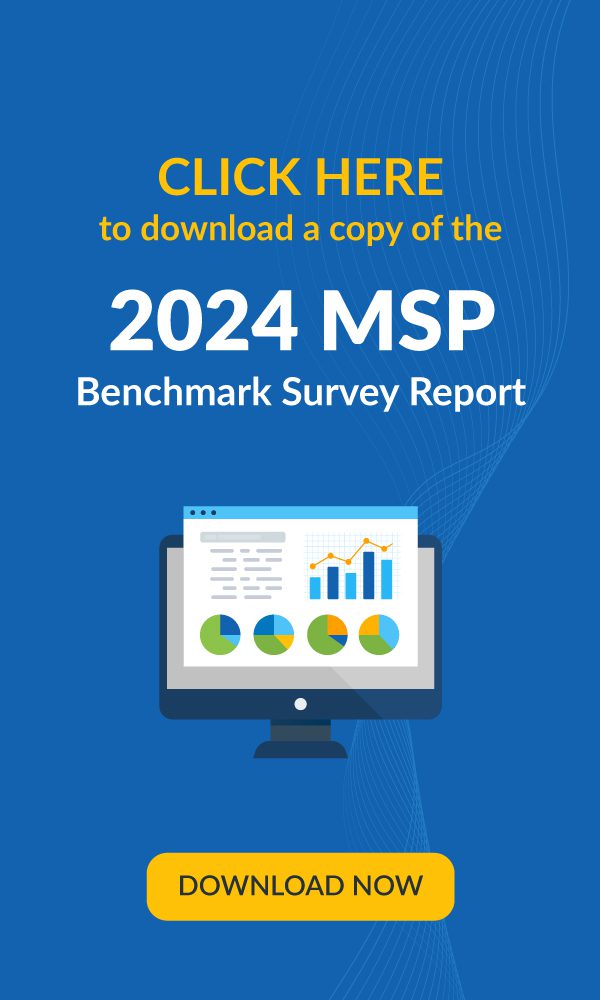MSPs sometimes operate in a vacuum, not knowing where the competition is excelling or failing. How can you measure yourself if you don’t know what others are doing, and improve if you don’t understand what the best do that you don’t.
Luckily, Kaseya has done a lot of the legwork for you in the form of our 2018 MSP Benchmark Survey, an annual undertaking.
Pricing Best Practices
As mentioned in our recent on MSP metrics, pricing services is critical to MSP revenue and profit.
As you can see by the graphic below, more MSPs sell for the low sum of $25 per user/month than those that do so for a super-premium of over $105 per month. The goal here is to rise to the top, which can be done by selling higher end services, make sure your services are worthy of that premium, have sales pros who are trained to promote your value, and look to increase pricing over time, perhaps through contract clauses that call for increases after a period of time.

The move away from break/fix is ushering in dramatic changes in pricing models where MSPs are no longer just matching the pricing and pricing strategies already established by the market and competitors, so-called price matching.
In fact, price-match approaches have gone down for the second year in a row, replaced by cost- and value-based pricing. Over the last three years, value-based pricing has led the pack, increasing from 51 percent of respondents in 2015 to 64 percent in 2016, and then dipping to 62 percent in our most recent survey.
Meanwhile, what MSPs charge for is changing, albeit it not dramatically. As you can see below, there is a slight increase in per-user pricing, but the largest pricing category remains “both per device and per user” at 41.92 percent despite a modest 1.80 percent decrease.

Picking the Right Markets
For years, service providers have been moving from break/fix to offering services such as remote monitoring and management, backup and various forms of security. Some services are more valuable than others, and high-value MSPs focus on the best. In this case, security is top of the heap. More MSPs, provide security services than any other specialty. Smart move, as security dramatically outpaced all other areas in growth.

At the same time, close to 70 percent of MSPs saw revenues for security increase, again a larger number than any other category, and one third of respondents see facing security challenges as their number issue, making it the top challenge by a factor of more than three.
Revenue results mirror, to some extent, participation levels in these markets as providers gravitate to more lucrative areas. Security had the highest growth, but more than half of MSPs said cloud management was also a growth area, which is in a bit of sync with the growth of MSPs involved in managing Office 365. Office 365, in fact, is the cloud service most leveraged by MSPs, with 86 percent taking advantage. That is almost double that of Microsoft Azure, leveraged by 45 percent of respondents.

Download our whitepaper “Two-Factor Authentication: The Solution to the Compliance and Protection Challenge” to learn more about how you can offer additional services to protect your customers and your business.
Compliance is Key
More and more organizations are falling under compliance rules, rules that get tougher all the time with enforcement likewise becoming stricter. As a result, regulatory compliance is top of mind for many MSPs – 75percent of North American MSPs said they or their customers are impacted by HIPAA and 59 percent by PCI DSS. Following that is Sarbanes-Oxley (SOX) with 33 percent
In our survey, 52 percent of MSPs worldwide already do compliance assessments. These assessments benefit the MSP and its customers, providing the MSP with opportunities for new revenue streams as well as awareness of changes that must be implemented to protect both businesses.

The Kaseya 2018 MSP Benchmark Survey report is based on detailed data provided by owners and operators of over 800 MSP firms of all sizes spread across over 40 countries.





